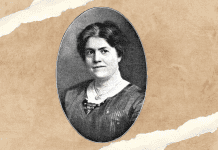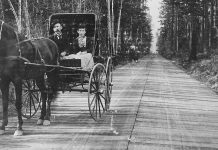Ten thousand people turn 65 years old every day in the United States – and in our culture of shame, it’s still off-limits to talk about pelvic problems that can occur more frequently with age.
Dr. Casperson, a urologist at Pacific Northwest Urology Specialists, has dedicated her life to changing that culture of embarrassment. She works with women, helping them to heal, and teaches that you don’t need to live with pelvic symptoms of menopause.
“I want to educate everyone that it’s okay to talk about our pelvis; it’s a body part that needs healthcare sometimes,” she says. She feels it’s important to tell women that “you’re valid, and this is as important of a health condition as any other thing you’d go to a doctor for.”

Urologists have traditionally focused on men, but within the last few years the industry has begun to include women, too.
“It’s women’s turn, and to me that’s equality and empowering,” says Dr. Casperson. “Fifty percent of every pelvis on the street has had babies, or they’ve had a urinary tract infection, or they’re in a sexual relationship that doesn’t feel right to them. It’s everybody, but nobody talks about it.”
What most women know about menopause consists of hot flashes and the end of periods. What they don’t know is that the pelvis and ovaries start to shut down, reducing production of estrogen, progesterone, and testosterone.
This leads to a huge spike in urinary tract infections, incontinence, and painful sex. Women don’t traditionally correlate these issues with menopause.
Incontinence and genitourinary symptoms is a new term that describes all symptoms involved in menopause.

“A lot of women do not know that it’s actually a medical condition,” says Dr. Casperson. “All of these things can come together, instead of all isolated individual problems that [women] think they’re having.”
About 50 percent of women experience incontinence during menopause, but often women don’t correlate menopause to their pelvis or bladder symptoms. If you’re experiencing incontinence, you’re not alone. Thirty percent of diapers sold in America are adult diapers. This is no small problem.
The average woman waits eight years before talking to somebody about bladder incontinence. The good news is that there are solutions.
Incontinence comes in two forms. “If you leak when you cough, sneeze, or laugh, that’s stress incontinence,” says Dr. Casperson.

Overactive bladder is if you need to go all the time, you know where every bathroom is in town, and you might leak a little bit on the way.
There is help for both of these conditions. Your urologist can evaluate you and discuss pelvic floor physical therapy, medication, Botox in the bladder, or surgery as options.
“I have success stories all the time,” Dr. Casperson says. “That’s why I love what I do.”
A recent patient had stress incontinence. “I said, ‘We’re going to do physical therapy first and if it doesn’t work, there’s always surgery,’” says Dr. Casperson. “She came back and said, ‘I’m totally happy.’ She was so excited that she didn’t need surgery. We were able to fix it and empower her to develop her own strength.”
Women should start thinking about taking estrogen around age 50-55, when they start having menopausal symptoms. You can start by talking with your general practitioner.

“The role of estrogen and testosterone in the pelvis is huge,” says Dr. Casperson. Low amounts of estrogen can lead to recurring urinary tract infections and painful intercourse.
“It’s cumulative, kind of like sun damage,” she continue. “The more years you go without estrogen, the more severe the condition can be.”
Over the last few years, Dr. Casperson has seen an increase in proactive women coming in to talk about their options before they encounter pain with intimacy. She loves the pre-emptive approach that women are taking with their bodies and is always excited to talk about options.
“Baby boomers are part of the first generation to be proactive in this department,” she says. “Their parents didn’t have medical treatments for these problems, so their parents just told them to just live with it – that it’s normal.”
Boomers are driving new research in the field. They’ve decided they don’t want to live this way for the next 30 years. The exciting thing is that they no longer have to.
Getting the word out is half the battle. These topics have been taboo for many years, but the conversation must begin for women to realize they can get help.
“It’s everywhere, but nobody talks about it,” says Dr. Casperson. “Once women start talking to their friends, the stories come out of the woodwork. Everyone has a story about their mother or their sister or themselves.”
“I think our culture of shame in saying a woman’s symptoms aren’t legitimate or that it’s normal, is detrimental,” she says. “If you tell a woman that these things are normal, they’re not going to seek care.”
She happily recounts an exclamation from one recent patient: “I feel like I need to shout this from the rooftops: You can get better!”
Tell your friends, have a chat. There’s nothing to fear.
“A woman who’s been empowered is the most powerful,” Dr. Casperson says, “because now she can go teach everybody else.”
For more information or to schedule an appointment, visit Pacific Northwest Urology Specialists’ website. And keep up to date with their official Facebook page, YouTube channel and Instagram account.
Sponsored





































